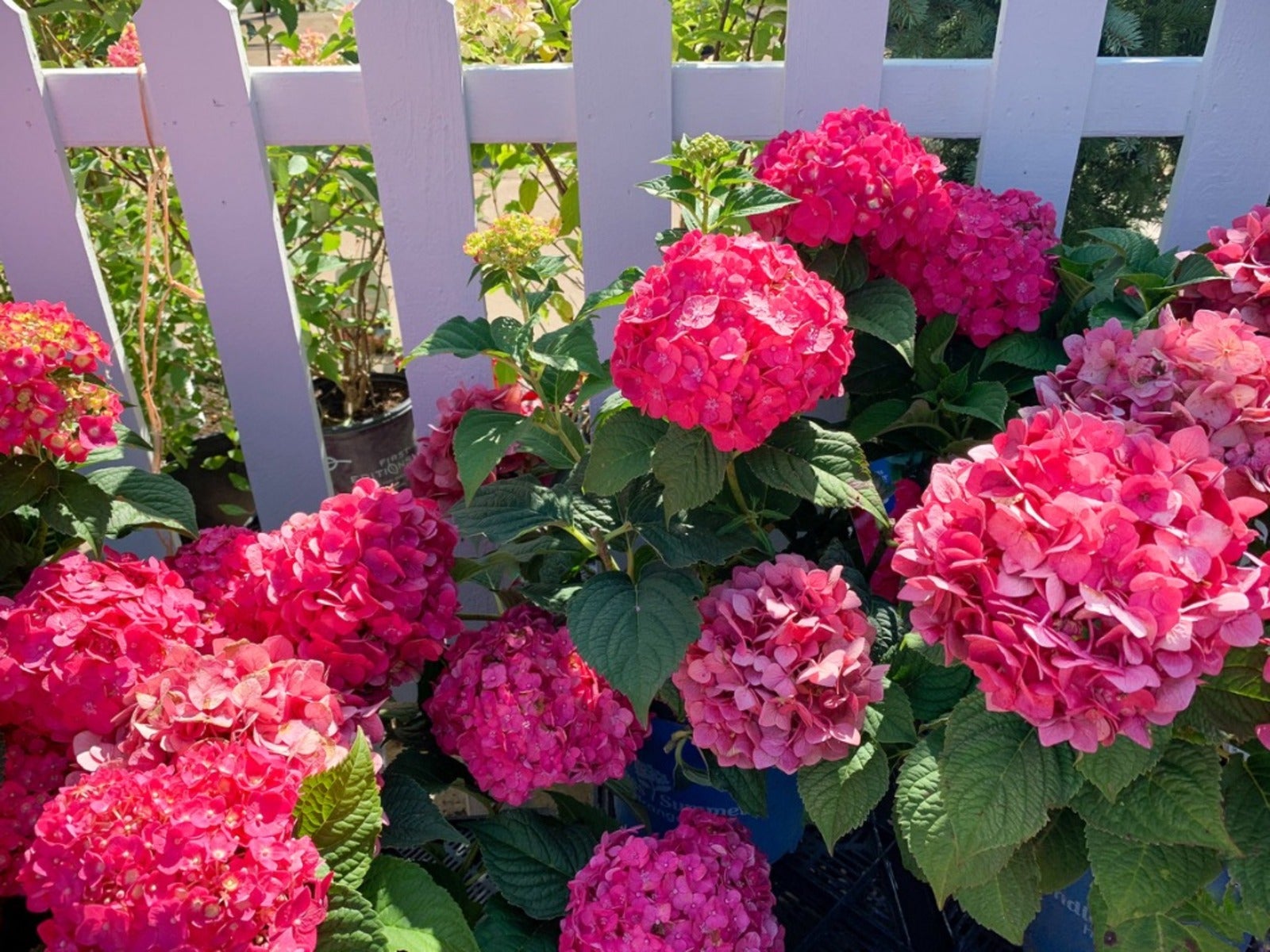Endless Summer Bigleaf Hydrangea Bushes That Keep On Blooming


Hydrangeas have exploded in popularity in recent years and so has the number of cultivars available. One group of hydrangeas, developed by plant breeder Dr. Michael Dirr and released in 2004, changed the complexion of the hydrangea industry. Previously, hydrangeas bloomed on either old wood or new wood, but the Hydrangea macrophylla Endless Summer series blooms on last season’s wood and the current season’s wood, providing repeat blooming for an extended period.
Touted as hardy to zone 4, Endless Summer offers five cultivars, with a sixth available soon. In the landscape they perform as hedges, specimen plants, container plants, or in a shrub border.
Endless Summer Hydrangea Care and Cultivars to Try
Endless Summer hydrangeas are compact, typically 2 to 4 feet tall (61 cm to 1 m) and are hardy in USDA zones 4 to 9. In warmer locations, give them at least three hours of morning sun and provide afternoon shade. In colder locations, the plant appreciates more sun, but will still some shade during the hottest part of the day.
The best soil for Endless Summer is soil that is organically rich to improve drainage and fertility, but still retains moisture. Adding organic material will increase the number of blooms. Macrophylla or bigleaf varieties typically change color depending on the soil pH. If the pH leans toward alkaline, flowers will be pink. If the pH is acidic, flower color is blue.
Water your Endless Summer plant regularly and keep the soil moist, but not wet. Overly wet soils are prone to fungal leaf diseases. The plant can be fertilized in spring or early summer. A slow-release fertilizer is recommended.
Pruning Endless Summer Hydrangea
Since Endless Summer blooms on last season’s growth as well as the current season’s growth, pruning should be selective. Prune the hydrangea after the first flush of flowers. Cut down the stems that just bloomed to 8 inches (20 cm) from the ground. Leave the growing new shoots to develop blooms later in the season or the next spring.
Dead or damaged wood can be removed at any time.
Sign up for the Gardening Know How newsletter today and receive a free copy of our e-book "How to Grow Delicious Tomatoes".
Winter Care
In colder zones, if your hydrangeas are in containers, overwinter them in the garage or basement, watering about once a month during the winter. Hydrangeas in the ground can be covered with a 2 inch (5 cm) layer of organic mulch, such as leaves or hardwood, after the ground freezes. Where winters are severe, wrap the canes in burlap or surround them with chicken wire filled with leaves. If harsh weather kills the plant to the ground, it should return, but it may not bloom that year.
Current Cultivars
Here are the current Endless Summer cultivars:
- ‘The Original’ hydrangea sports pink mophead-style flowers if the soil is alkaline and blue flowers if the soil is acidic.
- ‘Blushing Bride’ hydrangea is a bigleaf cultivar with white, semi double blooms that fade to pink or soft blue, depending on soil pH.
- ‘Twist-n-Shout’ hydrangea is a lacecap version with deep pink or periwinkle blue flowers, depending on soil pH.
- ‘Bloomstruck’ hydrangea has mophead-style flowers in deep rose in alkaline soil to violet blue flowers in acidic soil.
- ‘Summer Crush’ hydrangea is more compact than the others, only growing 18 to 36 inches (46-91 cm). Its mophead-style flowers are raspberry red or neon purple.
- ‘Pop Star’ hydrangea is the newest in the series and quickest to rebloom. Low growing at 18 to 36 inches (46-91 cm), this lacecap cultivar blooms in pink or blue depending on soil chemistry.

After graduating from Oklahoma State University with a degree in English, Susan pursued a career in communications. In addition, she wrote garden articles for magazines and authored a newspaper gardening column for many years. She contributed South-Central regional gardening columns for four years to Lowes.com. While living in Oklahoma, she served as a master gardener for 17 years.